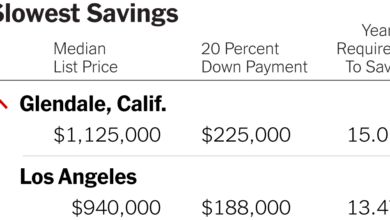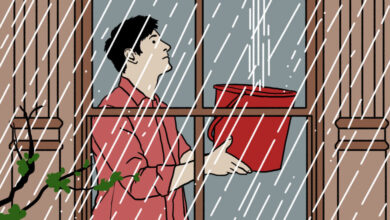Home Insurance: What to Know Before You Buy

In 2016, when Shawn Loht bought his house near New Orleans, he easily found homeowner insurance with a $2,000-a-year premium. “It was just lickety-split,” he said. But after Hurricane Ida, a Category 4 storm, barreled through Louisiana in 2021, his premium jumped to $6,109. Then his provider failed, leaving him facing a premium of nearly $13,000 a year from the state’s insurer of last resort.
“We were on the verge of being priced out of our home,” said Mr. Loht, 42, a research manager at a local community college.
Mr. Loht’s experience has become increasingly common as insurance companies react to cascading natural disasters by raising rates, reducing coverage and exiting some markets entirely. Last month, State Farm, the largest insurer in California, announced that it would stop issuing new home insurance policies in the state, signaling that more of the costly wrath of climate change is landing on homeowners.
“We should absolutely be nervous that this could happen regardless if you live in California or if you live in Northern Colorado or a place like Nebraska or northern Mississippi,” said Pat Howard, a home insurance expert at Policygenius, an online insurance marketplace. “These disasters are wiping out large swaths of homes and insurance companies are responding in kind by getting out of there.”
Mr. Loht ultimately found a $4,500-a-year policy with USAA, an insurance company that serves veterans and their families, avoiding the expensive alternative. But other homeowners may have to get creative to protect their properties and their pocketbooks.
Before You Buy
Before you buy a home, examine the risks. Enter your home address into a risk calculator, like Free Home Risk or Risk Factor, to see what perils await. “Be critical in the questions you’re asking,” said Sean Kevelighan, the chief executive of the Insurance Information Institute.
Speak with your real estate agent about adding an insurance contingency to your offer, so you can get out of your sales contract if insurance costs make the home unaffordable. Check your carrier’s rating from A.M. Best, which monitors the financial stability of insurers. “Anything less than an A-minus from A.M. Best, then you don’t want them insuring your home,” Mr. Howard said.
Revisit Your Policy
Shop around for a new policy every year, as rates and needs change. Inflation has dramatically impacted construction costs, so your existing coverage may no longer be adequate. “Make sure you understand what the policy is doing, how much it costs to rebuild,” said Mark Fitzpatrick, the insurance lead at MoneyGeek, a financial advice website.
Read the terms closely, as coverage varies even within a policy. Make sure your policy covers the replacement cost — not the actual cash value — of your home and its contents, or you could come up short. Coverage for damages like mold or a sump-pump failure could be limited to just a few thousand dollars. “In the fine print can be the difference between being able to rebuild after a climate disaster and not,” said Carolyn Kousky, the author of the book “Understanding Disaster Insurance.”
Think about your deductible. Do you have enough in savings to pay it out in an emergency? Decide if you need a policy that covers temporary lodging, should you be displaced. Consider getting flood insurance, even if you don’t live in a flood zone, as millions of homes are at risk for flooding. “The damage that a flood does, it’s really visceral,” said Holden Lewis, a home and mortgage expert at the website NerdWallet.
Reduce Your Costs
Coverage today is no guarantee of what will be available down the road. Bundle your homeowners policy with your auto policy to get a discount. And make sure you are not carrying too much insurance with coverage for hazards that don’t affect you. If you can’t find a private carrier, go to your state’s department of insurance for guidance.
Consider making home retrofits, like securing your roof from wind damage, or cutting the brush back from your house to reduce fire risk. These improvements will not only reduce your personal risk, but may also deliver you savings on your insurance policy.
Source link






